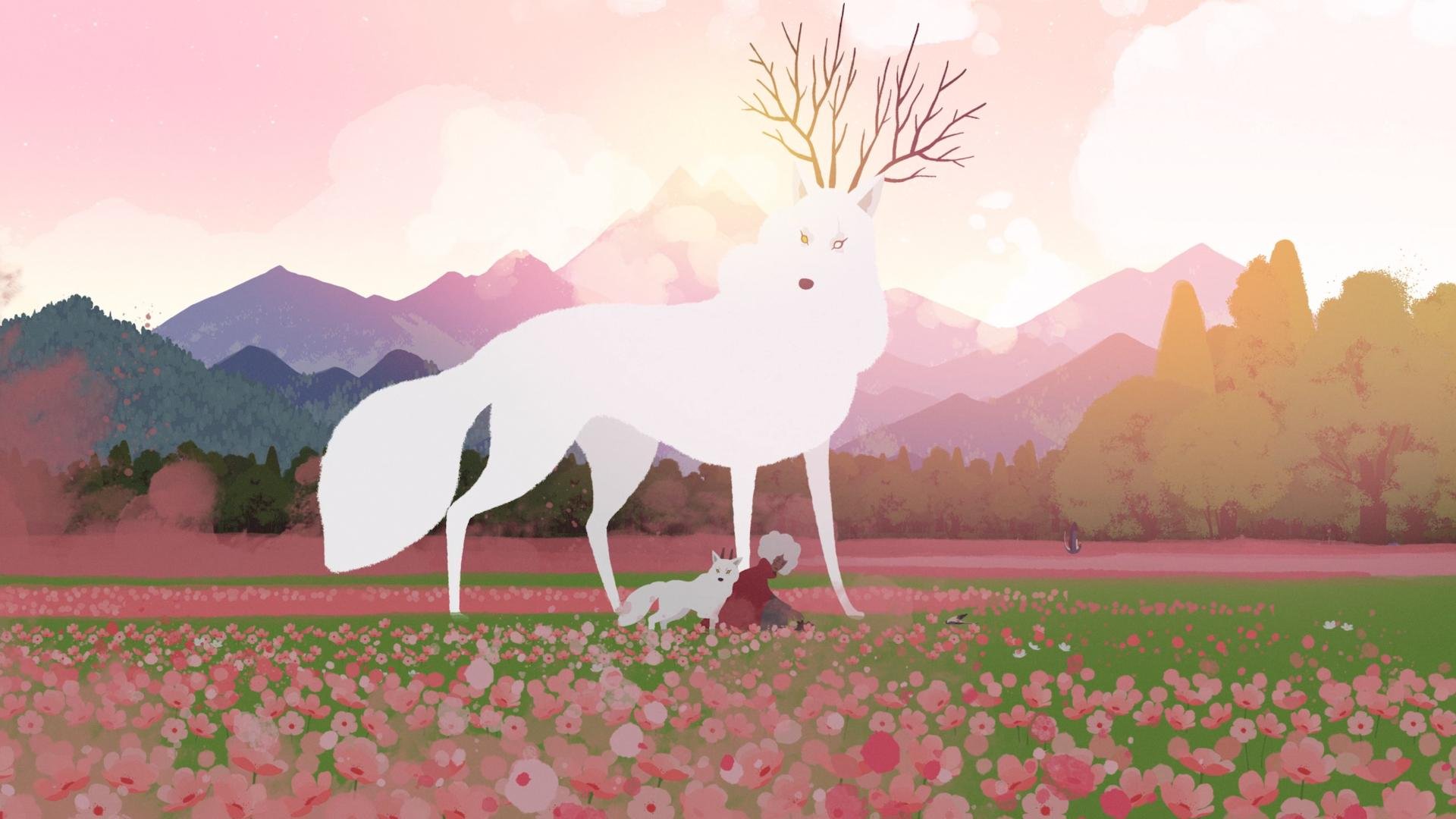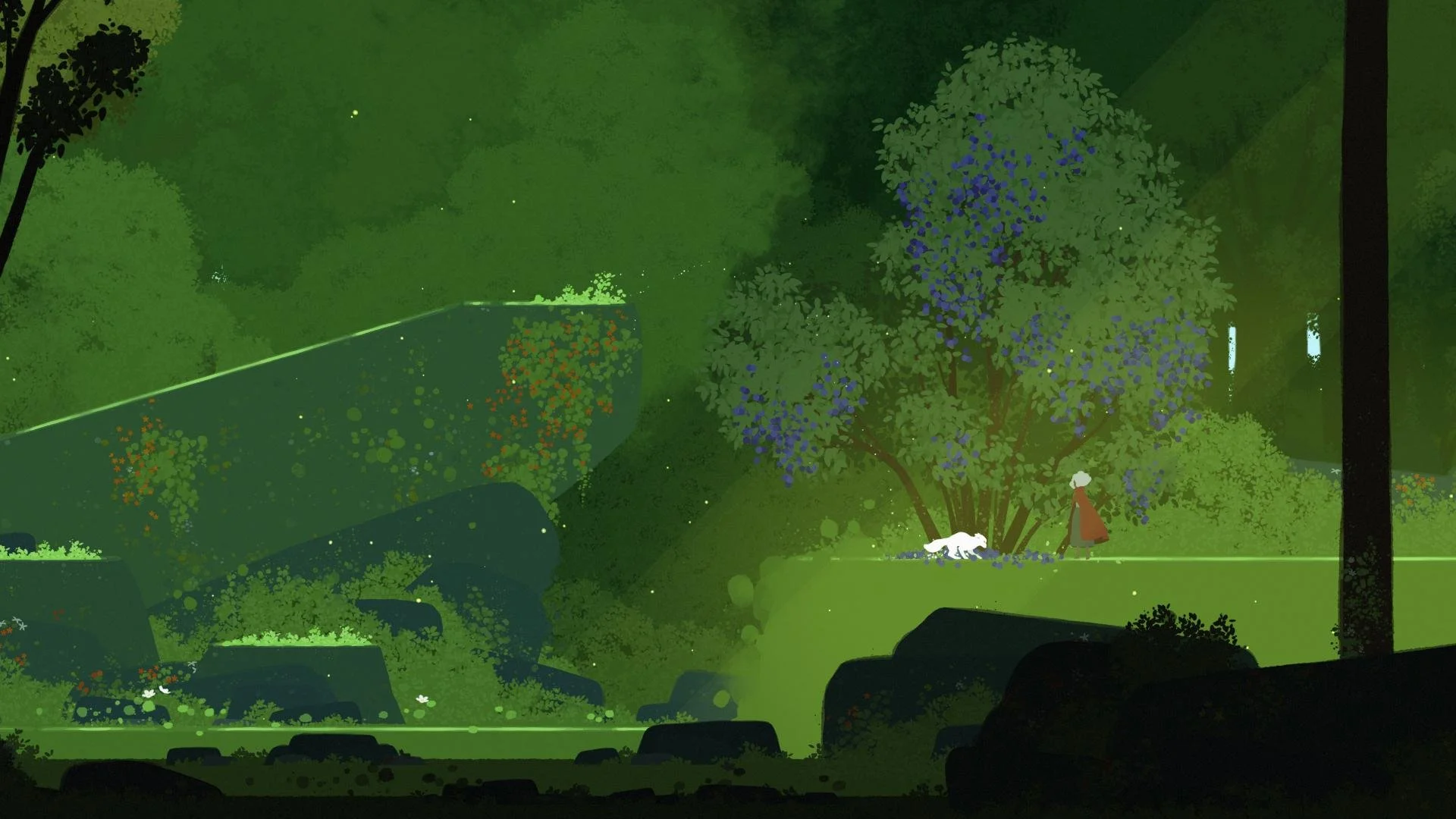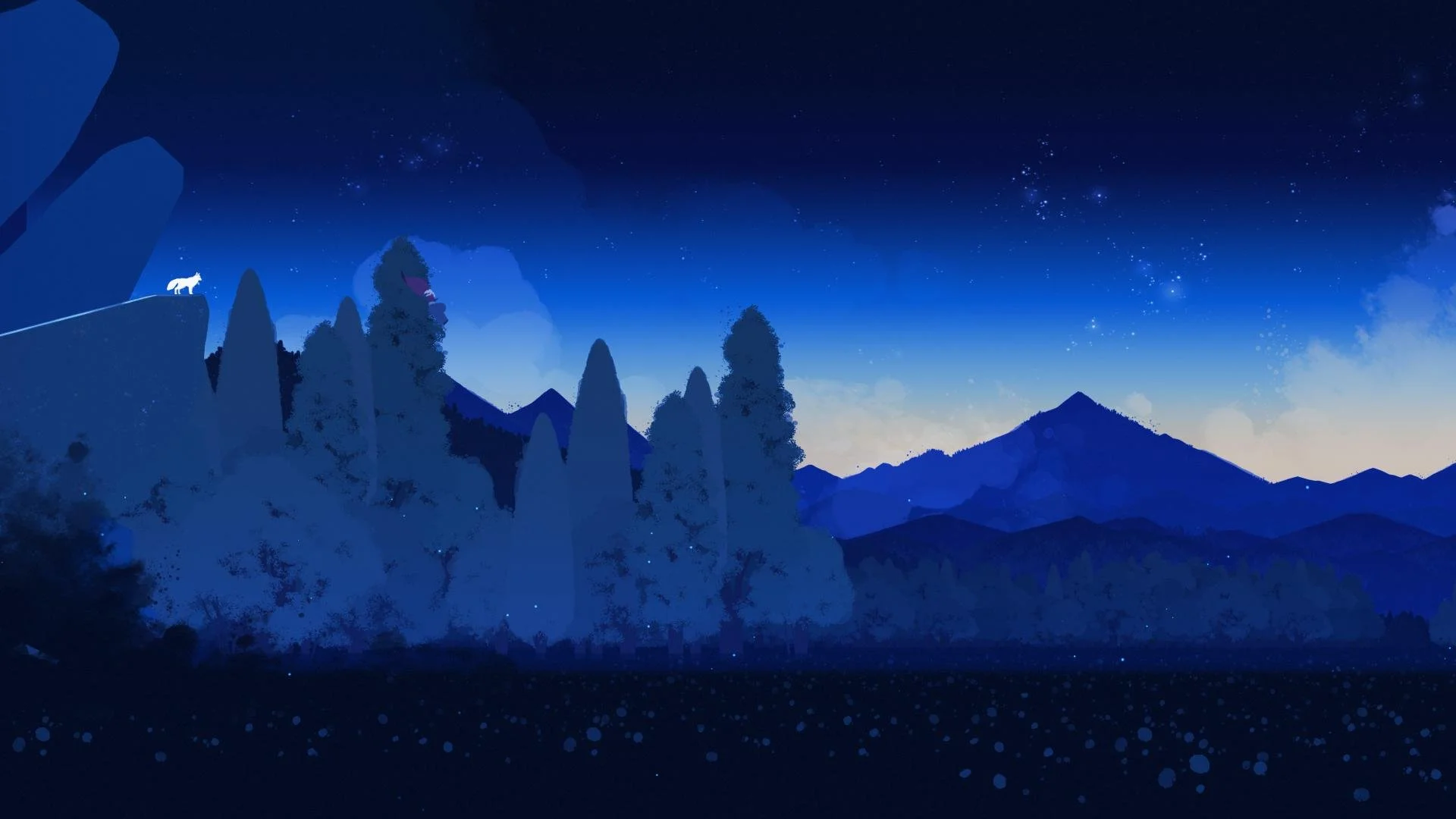Neva gonna give you up.
I knew I was going to love Neva. Gris was my Game of the Year in 2018, a celebration of incredible artwork and emotional design. It was downright stunning and a game I have played through several times already. To say I was excited for Neva is an understatement, it’s a game I have been looking forward to for well over a year, a game built by the incredibly talented Nomada Studio. While its emotional opening certainly intrigued me, especially with the addition of combat this time around, it was when I killed my first boss, a final strike in unison with my white wolf that Neva completely hooked me. Neva is tremendous and emotionally satisfying, and like its predecessor, it’s one of the best games I have ever played.
Neva began as a concept when the studio’s Creative Director, Conrad Roset, brought his son into the world. The team would take an approach about parenting into the game’s core design, as Alba and Neva would form a bond not much different than that of a parent and their child. Throughout the game, we see Neva grow. From a rebellious little pup who will attack on their own, or get distracted, to a magnificent adult wolf that becomes part of Alba’s combat arsenal. Neva is one moment adorable and tiny, barely able to make the smallest of jumps, to eventually teleporting and flying through the air, tearing through a sickness that is plaguing this world. COVID, social unrest, and additional factors would carve their place into the narrative as well as Alba and her young pup, Neva, would need to tackle the approaching sickness that causes a tragic moment for the pair in the game’s opening moments.
If you have played Gris, then you’ll likely know what you are going to experience here. The game has a stunning and captivating look to it, with a soundtrack by the Berlinist that is absolutely phenomenal. Both games share in much of the same design philosophies, showcasing Nomada Studio’s identity in ways that I fully expect to see in an eventual third game. And despite those similarities, both games feel unique and different from one another. Gris was more about escaping conflict or navigating its labyrinth-like environments, whereas Alba is equipped with a sword and a weaponized wolf that is ready to protect her at all costs.
In keeping with the parental design, Nomada studio knew that Neva was a game designed around two protagonists. Alba is a young warrior set to combat the plague that is destroying her world, and Neva, her companion, has her own motivations for seeing this sickness destroyed. Their bond will be more than just a part of the narrative as you’ll eventually be able to unleash Neva during combat, making them an extension of your sword.
Sending out Neva can often be as simple as aiming into the air to ravage some flying little creatures to throwing her out to the side during encounters with multiple creatures polluted by this sickness. This nature of fighting alongside Neva always feels as if you are equally taking part in combat even if you only control Alba in these moments. While it is some time before you can unleash Neva on your own, every single boss encounter is well-designed and engaging, especially one such moment against a pair of deer that are infected. Its conclusion is absolutely thrilling, as you and Neva destroy the sickness, seeing the pair of deer, free of the plague, embrace in unison, a love on display as flowers bloom around them as they stay in that moment forever.
What I love about Neva is how beautiful this game is and yet how readable its environments are. The art design is superb in conveying what you can interact with and what is in the foreground and what remains in the background. Platforms have a sheen to their surface, sticking out like a bright line to indicate it is a platform. Games that rely a lot on their artwork can almost become too busy with what is a background element and what is interactive. Neva is one of the few that doesn’t suffer from design confusion.
Neva herself is wonderfully animated throughout the different ages you’ll see her. From her innocent little jumps to attempt to snag fruit from a tree to the savage grunts and snarls as she bites harshly on a fallen infected, it’s quite the sight to see. I also love that Alba can interact with Neva, giving her pets, and even calling out to her with a dedicated button. The moment just mentioned, where she is biting at one the plagued souls, you’ll calm Neva down by long pressing the pet button, soothing her little mood swing. It’s incredibly delightful, especially as you can make out Alba’s hand gently caressing her fur.
Neva tells its story through four seasons. You’ll begin in Summer as you make your way through a bright forest and open fields, to venturing into a dark patch of the forest engulfed in the aforementioned darkness. It is here where you’ll learn a few of the game’s mechanics. From lashing out at eye-ball-looking nodes whose destruction will retract a series of thorns, to discovering the altars and fountains that can restore your health. You’ll also encounter the collectibles in the game, a bright and glowing lily that can be found all across this roughly 5-hour journey. What happens when you collect them all? Well, it’s something you’ll certainly want to discover, I’ll leave it at that.
You’ll then move to Fall as more mechanics become far more consistent. You’ll find floating squares hovering above you as you’ll look to find the key to causing them to expand out to progress into a light platforming puzzle. This has you heading off in each direction to find a flower that you and Neva will witness bloom upon your arrival. Fall’s colors are vast and stunning, especially its finale as the contrasts in color make it absolutely eye-catching. Winter arrives as more threats loom on the horizon with Alba and Neva ready to vanquish them. You’ll have more to take on here with new foes arriving as well as being able to finally ride Neva who has grown enough for Alba to mount. While Neva cannot leap to platforms, you can jump and cause Alba to soar a little bit higher.
Spring is the final season and a shorter chapter to close out the journey. While Fall is the longest season of the four, Spring is meant to close out the story and its conclusion is downright breathtaking, especially when you begin to notice similarities to an earlier encounter. While its final battle isn’t as epic as I would have liked, given there are few battles or encounters that really test everything you do in succession, the fact you have Neva and all your abilities in your arsenal, still makes it a satisfying bout. Honestly, it is my only single critique of this masterpiece.
Combat itself is floaty but has a measured weight to it. You stop your momentum as you swing, almost as if the blade is too heavy for Alba to wield. Alba can double jump, dash in the air, or roll on the ground. Your jump attack is high enough to pull off three swings, and eventually, you can use RB to cast out Neva to attack where you are aiming. Before you earn that ability; however, Neva will attack on her own, often pulling off a “you take the left, I’ll take the right.” approach when two enemies are in front of you. It’s so fun to pull off, especially if both enemies are hit off of a cliff at the same time.
Shortly into the journey, you’ll encounter white flowers on the edge of surfaces, allowing you to climb them and gain altitude to your next destination. These become commonplace and finding those off the beaten path is a good way to find the collectible lilies that you want to seek out. Despite their white nature, with much of this game being bright and well-lit, I never once found these flowers hard to see. It’s a delicate balance that the studio must have worked countless hours on to get just right.
Alba has three hit points that are indicated by three flower icons at the bottom of the screen. As you take damage, they wither away, but as you land several attacks on your foe, they grow back, petal by petal. The game isn’t meant to be challenging, but you’ll certainly die a few times to learn a few attack patterns or simply by missing a jump. Neva, like Gris, is a game about soaking up the adventure, being awestruck by its art, and pushing through its themes. This is the type of game that anyone could really just pick up the controller and get lost in, not struggling to kill a boss or confused on where to go. Neva is linear in the way where you generally have just a few directions to go; left, right, up, or down, and the game does a good job at conveying just how you go about that and what path you’ll need to take.
There is somewhat of a puzzle nature to Neva as you’ll jump through plague-infected portals, hit switches to change the environment, and more. Granted, these puzzles can feel very light-switch in their design, where you’ll often hit them once to move to another area and then again to progress further. Later on, you’ll have to throw Neva out to activate a switch as you platform around and move to the next area. Some platforming challenges are timed as well as you hit the bottom of a flower, having it bloom as you use the resulting platform to then carry on. While some of this could be considered a puzzle, I find it more puzzle-lite as it contains traces of something that requires thought and solution.
Neva and Gris both have some stunning artwork here with a soundtrack that is simply superb. Each game goes about its own way of revealing its story and introducing us to its characters. Alba and Neva are engaging and well thought out, even if Alba passes out a bit too often for my tastes. Regardless, Neva is a true work of art with a combat system that is deep enough for what this journey needs from Alba and her incredible companion. Its puzzles are brief enough that I don’t find them consuming too much of my time, allowing me to move on and find a pace that works for me. Neva may not break as much ground as Gris, but Nomada Studios has nonetheless crafted a stunning adventure and yet another masterpiece to enjoy.
Developer - Nomada Studio.
Publisher - Devolver Digital. Released - October 15th, 2024. Available On - Xbox Series X/S, PS4/PS5, Nintendo Switch, PC. Rated - (E 10+) - Fantasy Violence. Platform Reviewed - Xbox Series X. Review Access - A review code was provided by the publisher for the purpose of this review.
















Jeff is the original founder of Analog Stick Gaming. His favorite games include The Witcher III, the Mass Effect Trilogy, Hi-Fi Rush, Stellar Blade, Hellbade: Senua’s Sacrifice, and the Legend of Heroes series, especially Trails of Cold Steel III & IV.